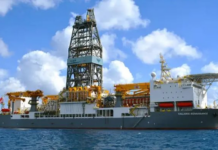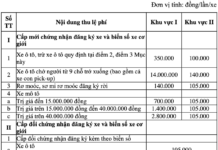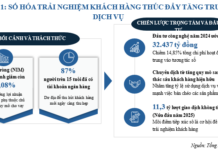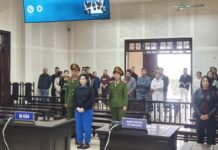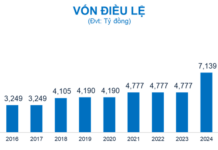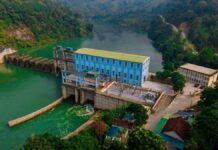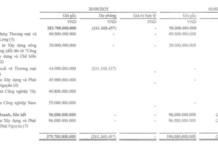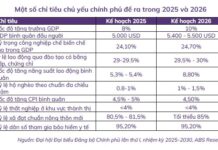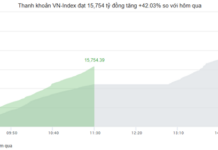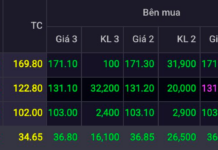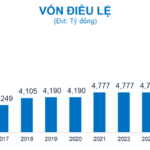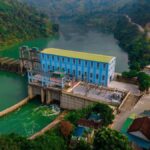On 28 February, the People’s Committee of Binh Thuan Province solemnly organized the Announcement Ceremony of the Binh Thuan Provincial Planning for the period 2021-2030 and vision to 2050. The ceremony was attended by Deputy Prime Minister Tran Hong Ha, leaders of Central Government agencies and departments, as well as more than 300 domestic and foreign enterprises in various industries interested in investing in the potentials of Binh Thuan Province.
In his opening speech, Mr. Doan Anh Dung, Chairman of the People’s Committee of Binh Thuan Province, emphasized that the Binh Thuan Provincial Planning for the period 2021-2030 and vision to 2050 is an important legal basis for the province to arrange its development space, formulate policies, allocate and efficiently use resources to successfully implement economic and social development plans and ensure national defense and security in the coming years.
To successfully achieve the goals of the Provincial Planning, Mr. Doan Anh Dung stated that Binh Thuan will continue to improve its mechanisms and policies, reform administrative procedures, improve the investment and business environment, and enhance competitiveness. In particular, the province will prioritize serving the people and businesses.
Binh Thuan will mobilize and effectively utilize state resources, private resources, and social resources to promote the development of modern and synchronized infrastructure systems. It will focus on attracting investment, with an emphasis on developing three pillars: Industrial development, with a core focus on clean energy and renewable energy industries, processing and manufacturing industries, and high-tech industries organized into linked clusters as the foundation for transforming and modernizing the economic structure.

In terms of tourism and services, Binh Thuan will focus on developing various types of tourism services such as coastal resorts, health care, entertainment, and sports activities; training and research services for scientific applications and technology; logistics services. In agriculture, Binh Thuan will focus on developing modern agricultural models that apply advanced technologies and have high added value, closely linked to value chains to enhance the efficiency of agricultural production and consumption.
With the theme “Binh Thuan – A Livable Place – An Attractive Investment Destination,” the Announcement Ceremony of the Binh Thuan Provincial Planning for the period 2021-2030 and vision to 2050, as well as the investment promotion for 2024, is an opportunity to introduce and promote the potentials, advantages, and investment attractions of Binh Thuan. Here, managers, experts, investors, and businesses will have the opportunity to provide suggestions and proposals to maximize the potential and strengths of Binh Thuan and achieve rapid, comprehensive, and sustainable development goals.
The Binh Thuan Provincial Planning for the period 2021-2030 and vision to 2050 was approved by the Prime Minister under Decision No. 1701/QD-TTg on December 7, 2023. According to the Planning, by 2030, Binh Thuan aims to become a dynamic, fast, and sustainable province, rich in marine resources, with the average per capita income (GRDP) higher than the average level of the region and the whole country. It will become a national and international-level coastal resort center, one of the green energy centers of the country, and strive to become one of the training and technology development centers in the region and the country.
Binh Thuan strives to achieve an average GRDP growth rate of 7.5 – 8% during the period 2021 – 2030, including industrial and construction sectors growing by 11 – 12%/year (industrial sector growing by 12 – 13%/year, construction sector growing by 10 – 11%/year); service sector growing by 7 – 7.5%/year; and agriculture, forestry, and fisheries growing by 2.5 – 3%/year.
In terms of society, Binh Thuan aims to increase the average per capita income by 2.7-3.5 times in 2030 compared to 2020; reduce the average poverty rate by 0.4-0.6%/year (according to each period’s poverty standard). In terms of resource utilization and environmental protection, Binh Thuan aims to ensure that 100% of the population has access to sufficient water for daily life and meet at least 95% of the total water demand of other economic-social sectors.
By 2050, Binh Thuan will become an important development center in the Central Coastal region, with a strong and sustainable marine economy, modern economic structure, and being a national and international-level clean energy center, tourist service provider, high-quality healthcare and education center, and science, technology, and innovation center for the region and the country. The material and spiritual life of its people will be at a high level compared to the region and the whole country, and its national defense, security, and sovereignty over the seas and islands will be firmly ensured.
In his speech at the ceremony, Deputy Prime Minister Tran Hong Ha acknowledged and commended the prominent achievements that the Party Committee, the government, and the people of Binh Thuan Province have attained in the past. Particularly, Binh Thuan has made use of its distinct advantages and strategic geographical location, along with relentless efforts from the political system, to overcome difficulties, achieve strong development, and become one of the important growth centers of the region.
The scale of the economy has reached VND 100 trillion, more than 25 times higher than in 1992 (the time when the province was reestablished). The GRDP growth rate in 2023 was 8.1%, ranking 14th out of 63 provinces and cities nationwide. The infrastructure system and socioeconomic development have continued to be invested in a coordinated and interconnected manner.
Deputy Prime Minister Tran Hong Ha remarked that with its unique conditions and advantages outlined in the Provincial Planning, Binh Thuan is identified as an industrial center for clean energy and coastal tourism, associated with ecological tourism. Binh Thuan is one of the destinations in the Central region’s heritage journey.
Binh Thuan aims to become a dynamic, fast, sustainable, and prosperous province, enriched by its marine resources. However, the Planning announced today is just the initial step in determining the development space, and it is interconnected with other coastal Central provinces as well as other economic-social regions such as the Central Highlands, the Southeast, etc.
In the coming period, Deputy Prime Minister recommended that Binh Thuan Province focus on fully implementing Resolution No. 06 of the Politburo on planning, construction, management, and sustainable development of urban areas in Vietnam until 2030, with a vision to 2045. Based on the local experiences in urban planning and construction, Binh Thuan needs to proactively address the issues that major cities nationwide are facing, such as environmental pollution, resource exploitation, traffic congestion, flooding, and the synchronization of infrastructure.
During the Announcement Ceremony, the Provincial People’s Committee awarded Investment Registration Certificates and approved investment proposals for four projects with a total capital of nearly VND 2.1 trillion, as well as signed memorandums of understanding on investment registration for seven investors with a total registered capital of over VND 127 trillion in various fields, including real estate, industrial park infrastructure, trade and services, tourism, energy, and mining, etc.

